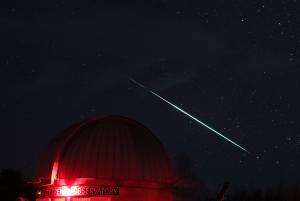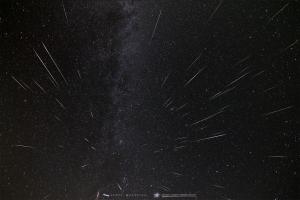Celebration of Space - August 2, 2024
This past Thursday, August 1, 2024 was the celebration of Lammas. Even though the day has religious implications, the date itself is astronomical as it is a cross quarter day. These days mark the midpoint between the Solstice and Equinox, and vice versa. Now that Lammas has passed, we are in the second half of summer as we make our way towards the coming Autumnal Equinox. So take some time to revel in the summer Sun, and start to shift your thoughts towards harvest, leaf-peeping, and autumn fun, because the last days of summer are about to arrive.
This coming Sunday, August 4, 2024 at 7:14 am ET, the new Moon will occur. This happens when the Moon orbits in between the Earth and the Sun causing the opposite side of the Moon to be in direct sunlight while the side that faces Earth is in night. Because the new Moon will rise and set with the Sun, the nights around the new Moon are the best times to be out observing the night sky. The evenings immediately following the new Moon will bring stunning views of the super thin waxing crescent Moon to the twilight sky.
On July 14, 2024, the annual Perseid Meteor Shower kicked in, which continues until September 1st. Though the best time to be out to experience the meteor shower is on the peak night, which happens overnight August 11-12, 2024. On this night Earth will orbit through the highest density of comet debris, allowing for an increase in regular meteor activity by upwards of 100 meteors per hour. That sounds fabulous and all, but will a viewer actually see that level of activity?
The Perseids are a product of Comet 109P / Swift-Tuttle, a periodic comet with an orbital period of 133 years. Every August, Earth passes through the debris field that the comet leaves behind. The vast majority of debris is made up of water ice and is about the size of a piece of dust – grain of rice. Though occasionally larger particles will encounter Earth’s atmosphere. When particles of debris enter the atmosphere they are traveling at rates of 37 miles per second, which causes them to burn up when encountering the mass of our atmosphere. The result is a streak of light in the sky. Most of the small particles only light up dimly and are easily obscured by haze, clouds, artificial light, and Moon light. Also, the radiant point of the shower, which is where all meteors appear to originate from, needs to be well above the horizon to reach that high hourly viewing rate. So, to see 100 meteors per hour on a peak night will require crystal clear sky conditions, no light pollution, no Moon, and the radiant point near the zenith (top of sky). Most of these necessities are just not practical for Southern New England August.
In 2024, the peak night will have the presence of the 44% crescent Moon, which will set around 11:00 pm. This could work out well, as far as the Moon is concerned, because the radiant point of the shower will rise higher in the sky during the early morning hours of the 12th, which is after the Moon sets. The other problem comes down to sky conditions. August in Southern New England is notorious for the presence of wildfire smoke, which will significantly obscure meteor visibility, depending on how heavy it is. It is certainly too early to call it, but we are keeping our fingers crossed for good weather.
Another perk about the Perseid peak is that the peak period seems to offer a good pre and post peak display. We have often seen better showings of Perseid meteors on the night after the peak, and even a good deal visible on the second night after the peak. If you happen to find yourself out under a clear sky one night this week, take an hour to lay out under the stars and see if you can spot some early Perseids. Frosty Drew is planning to open for the Perseid Meteor Shower Peak if the weather can stay cooperative. We will write about the Perseid event again next Friday. Until then, keep looking up.
Evening passes of the International Space Station (ISS) came to a close this past week, but China’s space station – Tiangong, continues to offer up spectacular evening passes for our sky watching enjoyment. Here are several notable passes of Tiangong for this weekend and coming week:
Fri, Aug 2 at 8:55 pm, starting in the W, rising to 89°, heading towards the E, and into orbital sunset ← Awesome pass!
Sat, Aug 3 at 9:34 pm, starting in the W, rising to 55°, and into orbital sunset
Sun, Aug 4 at 8:36 pm, starting in the W, rising to 74°, heading towards the ESE ← Awesome pass!
Mon, Aug 5 at 9:14 pm, starting in the W, rising to 35°, heading towards the SSE, and into orbital sunset
Wed, Aug 7 at 8:55 pm, starting in the W, rising to 21°, heading towards the SSE, and into orbital sunset.
Tiangong will complete evening passes for the current cycle on Thursday, August 9, 2024, and will return to the evening sky again on September 16, 2024 to wrap up summertime views. So step outside this weekend and coming week and look for a clearing in the sky to catch a view of China’s space station passing over. For daily pass times of Tiangong and other bright satellites visit Frosty Drew.
- Author:
- Scott MacNeill
- Entry Date:
- Aug 2, 2024
- Published Under:
- Scott MacNeill's Columns





